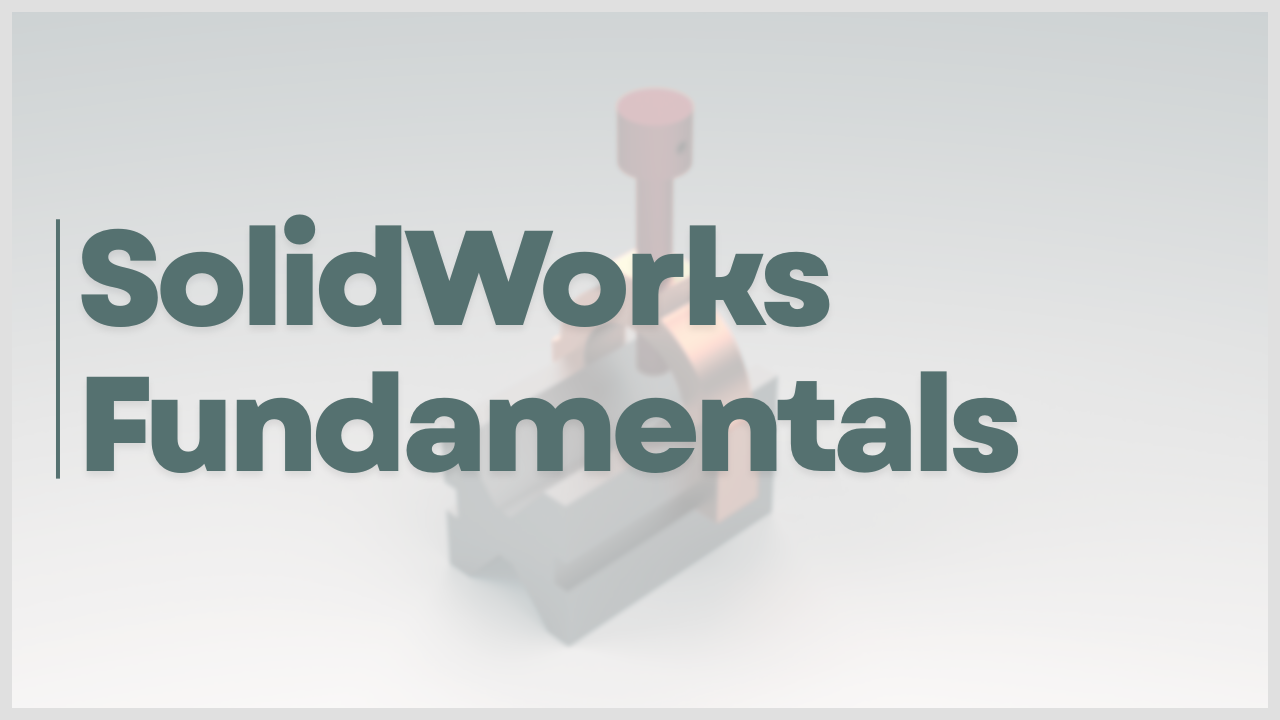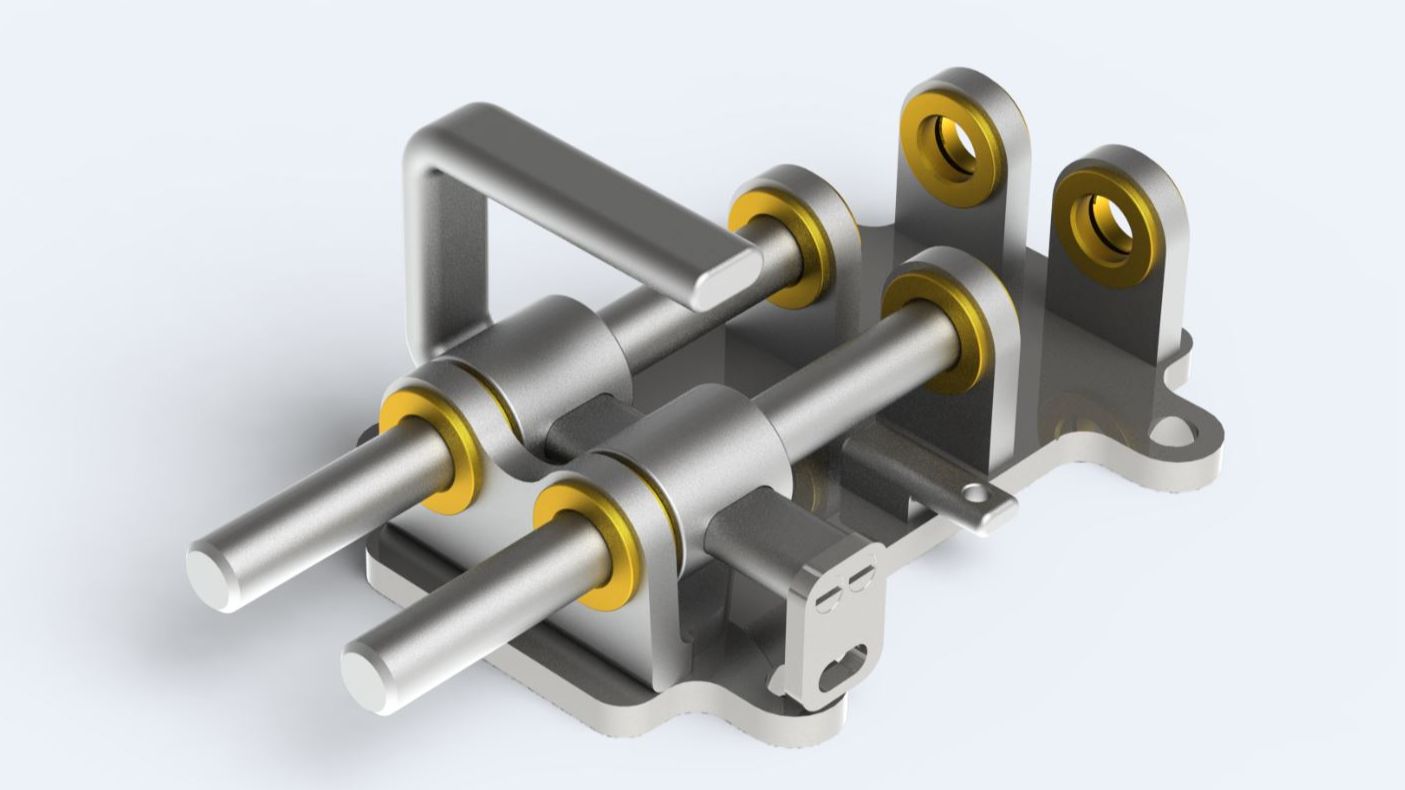
SolidWorks Fundamentals
€ TBA
SolidWorks Fundamentals introduces students to the foundational tools and workflows of 3D parametric modeling using SolidWorks—the industry-standard software for mechanical design and product development. Participants will learn how to create fully defined sketches, build parts using essential modeling features, and assemble components into functional mechanical systems.
ADD TO CARTCourse Description:
Learning Objectives:
Other Information
Course Outline
-
Module 1: Health and Safety
6 lessons- 1.1 - Hardware
- 1.2 - Software
- 1.3 - Legislation
- 1.4 - Safe working practices
- 1.5 - Common injuries
- 1.6 - Module 1 Quiz: Health and Safety
-
Module 2: Understand the methodology
12 lessons- 2.1 - Understanding SolidWorks
- 2.2 - User interface
- 2.3 - Task plane and program layout
- 2.4 - Design intent
- 2.5 - File operations
- 2.6 - Command Manager
- 2.7 - Measuring techniques
- 2.9 - Features
- 2.10 - Parametric modelling Demonstration
- 2.11 - Viewing tools
- 2.12 - Setting templates
- 2.13 - Module 2 Quiz: Methodology of Parametric modelling
-
Module 3: Getting started basic commands
12 lessons- 3.1 - Sketch tasks
- 3.2 - Sketch Commands
- 3.3 - Sketch Dimensions
- 3.4 - Sketch tools
- 3.5 - Sketch Patterns
- 3.6 - Sketch Entities
- 3.7 - Sketch Location
- 3.8 - Sketch Relations
- 3.9 - Sketch Definition
- 3.10 - Sketch Features
- 3.11 - Sketch Equations
- 3.12 - Module 3 Quiz: Basic Sketch Commands
-
Module 4: Basic Modelling techniques
10 lessons- 4.1 - Work features
- 4.2 - Geometric constraints
- 4.3 - Dimensioning and changing parameters
- 4.4 - Introduction to Sketched features and terminology
- 4.5 - Choosing shape profile and plane
- 4.6 - Create extruded features
- 4.7 - Extrude, Revolved and fillet features
- 4.8 - Surface selection
- 4.9 - Edit existing features
- 4.10 - Module 4 Quiz : Basic Modelling techniques
-
Module 5: Patterning and driven features
7 lessons- 6.1 Mirror command
- 6.2 - Parallel Planes
- 6.3 - Mirror Bodies
- 6.4 - Linear Pattern
- 6.5 - Circular Pattern
- 6.9 - Creating Axes and reference geometry
- 6.13 - Module 6 Quiz - Patterning and driven features
-
Module 6: Basic Assemblies
8 lessons- 7.1 - Starting an assembly
- 7.2 - Positioning parts
- 7.3 - Adding Mates
- 7.5 - Show and Hide Components
- 7.8 - Exploding assemblies
- 7.9 - Constraints
- 7.10 - Types of assembly constraints
- 7.11 - Module 7 Quiz: Basic Assemblies
-
Module 7: Basic Drawings
10 lessons- 9.1 - Projection
- 9.2 - Templates
- 9.3 - Layouts
- 9.4 - Views
- 9.5 - Details
- 9.6 - Annotations
- 9.7 - Properties
- 9.8 - Appearance of the views
- 9.9 - Saving Formats
- 9.10 - Module 9 Quiz: Basic Drawings
-
Module 8: Diagnose and repair faults
13 lessons- 12.1 Diagnose problems
- 12.2 Auto repair
- 12.3 Manually repair
- 12.4 Reordering features
- 12.5 Reordering features
- 12.6 Roll back bar
- 12.7 Repair definition problems
- 12.8 Fully define function
- 12.9 Feature problems
- 12.10 Order problems
- 12.11 Repair failed features
- 12.12 Identifying repair order
- 12.13 - Module 12 Quiz: Diagnose and repair faults
-
Bonus: DCG Projects - 2020 - 2025
7 lessons- DCG Projects 2020
- DCG Projects 2021
- DCG Projects 2022
- DCG Projects 2023
- DCG Projects 2024
- DCG Projects 2025
- Untitled quiz
-
Bonus: Project 1
1 lesson- Advanced Project
Self-Paced Learning
Students can review lessons anytime, pause during complex tasks, and learn at a comfortable speed.
Self-Paced exams
Step-by-step modeling exercises with on-screen guidance, downloadable files, practice activities and individual module exams .
Written by Experts
All courses are written by experienced industry experts who actively work in engineering, design, and advanced manufacturing fields.
You May Also Like



